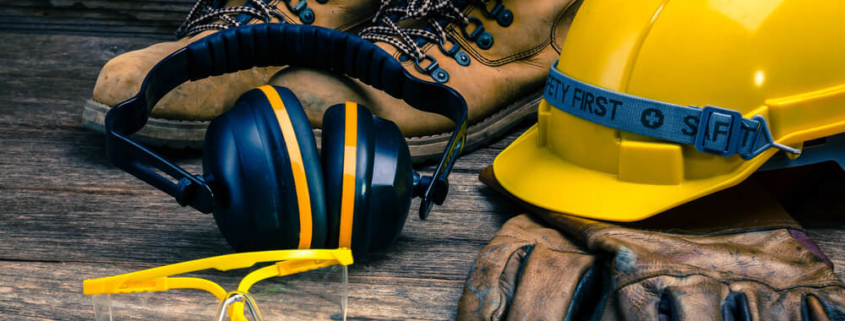Prevention and Safety – Following OSHA Regulations for Construction Sites
The Occupational Safety and Health Administration (OSHA) creates standards for employers and enforces the safety and health regulations in American workplaces, including construction sites. All employers and workers must comply with OSHA standards aimed at creating safe work environments.
When OSHA codes and rules are ignored or go unenforced, the consequences can be serious, even fatal. Construction site accidents can lead to severe injuries and lasting consequences for both workers and the responsible parties. How are construction sites supposed to keep employees safe and prevent accidents, and what types of OSHA violations are common in these environments?
OSHA Regulations for Constructions Sites
The construction industry poses so many threats to workers that OSHA has given it particular attention and guidance. The regulator has classified the top four risks to construction workers as the “Fatal Four.”
- Falls– Roughly 40% of construction site fatalities are due to falls from roofs, cranes, scaffolding, and other elevations. Typical fatal injuries include internal damage and brain or spinal cord trauma.
- Electrocution– More than 8% of construction site deaths are caused by electrocution. These can be caused by contact with overhead wires, defective machinery, or tasks near electrical panels.
- Falling Objects– Another 8% of construction site fatalities are due to falling objects, such as construction materials or tools falling from scaffolding, roofs, or cranes.
- Compression Injuries– About 4% of construction site deaths are attributed to “caught-between” injuries where workers are compressed by objects or equipment or crushed by falling structures.
Eliminating these threats alone in the construction industry could save more than 500 lives each year. But those aren’t the only risks in construction. Others include:
- Injuries from fires and explosions– Fires and explosions on construction sites can result from the poor storage or handling of flammable materials.
- Injuries from equipment– Heavy machinery, power tools, and construction vehicles can malfunction, be used improperly, or have defects that cause injuries.
- Injuries from trench collapse– When trenches are not dug, planned, or marked correctly, they can collapse and cause injury.
OSHA has created regulations for employers to prevent accidents by establishing best practices in the workplace through rules and education. Employers are also mandated to provide a safe working environment that considers a variety of risks:
- Equipment safety– Employers must ensure that equipment functions properly and is regularly serviced.
- Electrical safety– Employers must clearly mark electrical hazards and cover items for safety.
- Fall safety– Employers must put fall-prevention measures in place when workers use scaffolding or are on roofs.
When an employer falls short of these standards, they could face penalties for OSHA violations.
Types of OSHA Violations
Your employer has an obligation to provide a safe workplace that is free from hazards. There are four different types of OSHA workplace violations:
- Other-than-serious– There is a condition present that could impact workplace safety and health but likely won’t cause accidents or injuries.
- Serious– A workplace hazard could cause a serious injury or potential fatality.
- Willful– An OSHA regulation is being knowingly ignored.
- Repeated– The workplace has been cited previously for the same violation.
The most frequent OSHA violations relate to workplace accidents. Employers are most frequently cited for the following violations:
- Hazardous conditions
- Lack of fall protection
- Failure to provide respiratory protection
- Insufficient control of hazardous energy
- Unsafe scaffolding or lack of fall protection
If You’ve Been Injured Due to a Safety Violation
If your employer fails to follow OSHA workplace safety guidelines, and you suffer an injury, you should report the violation to ensure no one else gets hurt. When an employee reports a violation to OSHA, several things could happen:
- OSHA might investigate the employer.
- The employer could be fined and mandated to make changes.
- The employer could lose its operating license.
No matter what happens between your employer and OSHA, you have the right to secure certain benefits if you were injured on the job. In some cases, those benefits might come from the state workers’ compensation program. But, depending on the circumstances of your accident, you may also be able to pursue a civil case with additional damages.
After an injury, you should always obtain appropriate medical treatment and report the accident and any hazards to your employer. You should also speak with a knowledgeable construction injury lawyer for a free case review.
Speak With an Experienced Construction Accident Attorney
If you’ve been injured in a construction site accident, whether an OSHA violation was involved or not, you may be entitled to compensation. OSHA Injury Attorneys was created to ensure that workers understand their rights as well as the obligations of their employer with respect to workplace safety.
After an injury, you should seek immediate medical attention as well as the advice of a qualified workplace injury attorney. Please complete our contact form on this page, and we’ll put you in touch with an attorney that can explain your options.




Leave a Reply
Want to join the discussion?Feel free to contribute!